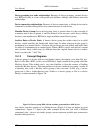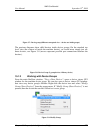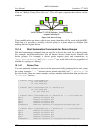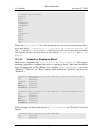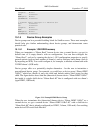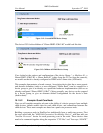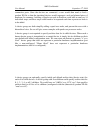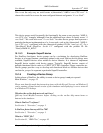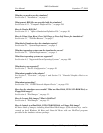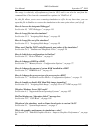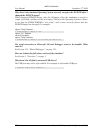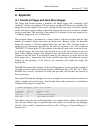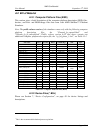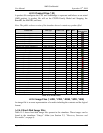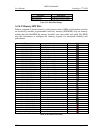
AMD Confidential
User Manual September 12
th
, 2008
Chapter 15: Frequently Asked Questions (FAQ) 177
This is not the only way we could create a (theoretical) “AMD 4-core CPU xxxx”. A
cleaner idea would be to reuse the non-configured abstract and generic “4 core Node”.
This device group would (externally) be functionally the same as our previous “AMD 4-
core CPU xxxx” example, although it has the additional layer where it cleanly reuses “4
core Node”. We could also reuse “4 core Node” for other device groups that represent a
particular hardware implementation of a 4-core node, such as the (theoretical) “AMD 4-
core CPU yyyy” configured with the (theoretical) product ID file “amd-yyyy.id”. Or a
“DeerHound RevB QuadCore Socket L1” configured with the product ID file
“Family10hDR-L1_B0.id”.
15.1.5.3 Example: SuperIO device
For SimNow developers, device groups can be a technique for developing SimNow
devices in a layered manner, promoting optimal code reuse. Before device groups were
available, SuperIO devices were written as device libraries. It is cleaner to implement
SuperIO device models with device groups. Typically, SuperIO devices consist of
multiple functional blocks such as a UART, LPT, PS2 controller, Floppy controller etc.
Device groups provide a way to develop each functional block as discrete devices that
can later be grouped to represent a particular SuperIO controller.
15.1.6 Creating a Device Group
In this release of SimNow, the ability to create a device group is not yet exposed.
Main Window”, on page 15.
Please note that this mode has interaction issues with the Exceed X-server on Windows if
you're running a Linux hosted version of the simulator and displaying it over a network
to a Windows PC desktop.
Why does the on-line help not work on Linux?
Quit any local Mozilla browsers before clicking on the on-line help menu items or
buttons in the simulator.
What is SimNow™ software?
See Section 1, “Overview”, on page 1.
Is SimNow faster than my old Vax 780?
See Section 1, “Overview”, on page 1.
What is a "BSD" file?
See Section 6.1, “BSD Files”, on page 45.




